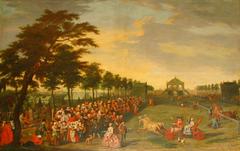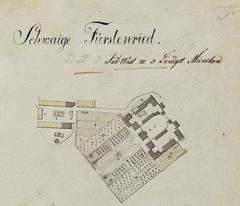
Fürstenried Palace Visiting Hours, Tickets, and Guide to Munich’s Historical Sites
Date: 15/06/2025
Introduction
Fürstenried Palace (Schloss Fürstenried) is a remarkable yet understated Baroque landmark located in southwest Munich, Germany. Originally constructed between 1715 and 1717 as a hunting lodge and summer residence for Elector Maximilian II Emanuel of Bavaria, the palace exemplifies early 18th-century Bavarian Baroque architecture and has witnessed centuries of historical transformation—from royal refuge to military hospital, and now a spiritual retreat and cultural venue under the Archdiocese of Munich and Freising. This comprehensive guide details Fürstenried Palace’s history, architectural features, visiting hours, ticketing, accessibility, and tips to help you explore one of Munich’s hidden historical treasures (Schloss Fürstenried Visiting Hours, Tickets & Historical Guide | Munich Historical Sites, Fürstenried Palace: Visiting Hours, Tickets, and Exploring Munich’s Historic Baroque Gem).
Table of Contents
- Historical Overview and Cultural Significance
- Architectural Features and Gardens
- Visitor Information
- Special Events & Guided Tours
- Nearby Attractions
- Frequently Asked Questions (FAQ)
- Travel Tips and Planning
- Conclusion & How to Stay Updated
- References
Historical Overview and Cultural Significance
Commissioned by Elector Maximilian II Emanuel, Fürstenried Palace was built by architect Joseph Effner as a Baroque hunting lodge and summer residence. Its location was selected for proximity to the forests and hunting grounds southwest of Munich, reflecting the aristocratic traditions of early 18th-century Bavaria.
In the 19th century, the palace gained prominence as the residence of Prince Otto of Bavaria, who lived here in seclusion under the care of King Ludwig II. Restoration efforts during this period, particularly under Carl von Effner, revitalized the Baroque gardens. The palace later served as a military hospital during both World Wars and, after 1925, became a retreat and seminary for the Archdiocese. Notably, Joseph Ratzinger (Pope Benedict XVI) studied here following WWII.
Today, Schloss Fürstenried serves as a spiritual and cultural center, hosting retreats, seminars, and select events, while its gardens and chapel remain accessible to the public (themunichguide.de).
Architectural Features and Gardens
Baroque Architecture
Fürstenried Palace is an exemplary specimen of Bavarian Baroque style. The symmetrical layout features a central three-story main building flanked by two pavilions connected via galleries. The façade is adorned with restrained stucco ornamentation and a mansard roof, reflecting French château influences.
Key Highlights:
- Blue Cabinet (Blaues Kabinett): Surviving 18th-century stucco friezes and painted ornamentation.
- Enfilade: The Baroque tradition of aligned rooms for impressive sightlines.
- Chapel: Dedicated to St. John Nepomuk, featuring Rococo elements.
Baroque Gardens
The palace grounds combine original Baroque design with 19th-century landscaping:
- Linden Tree Avenues: 110 lime trees in double rows frame the approach to the palace.
- Ornamental Parterres: Symmetrical gardens once renowned for rare fruits and vegetables.
- Botanical Diversity: Restored and expanded varieties since the 19th century.
The gardens remain open year-round and are ideal for leisurely walks and photography.

Visitor Information
Location & Getting There
- Address: Schloss Fürstenried, Forst-Kasten-Allee 103, 81475 München, Germany
- Public Transport: U3 U-Bahn to Fürstenried West station, then a short walk; bus lines 133 and others serve the area.
- By Car: Accessible via A95, with limited parking nearby.
Visiting Hours
As of June 2025:
- Gardens: Open year-round, free of charge.
- Interiors: Public access is limited to special events, guided tours, or open days.
- Typical Guided Tour Hours: Tuesday–Sunday, 10:00 AM – 5:00 PM (last entry 4:30 PM). Closed Mondays and public holidays.
- Note: Always check the official website for up-to-date schedules.
Tickets & Admission
- Gardens: Free
- Guided Tours/Events:
- Adults: €8
- Reduced (students, seniors): €5
- Children under 12: Free
- Group rates available; advance booking required
Tickets can be purchased online or at the palace entrance during events.
Accessibility
- Gardens: Paved and suitable for wheelchairs and strollers
- Interiors: Some accessibility limitations due to historic features; contact administration for details
Special Events & Guided Tours
Fürstenried Palace hosts guided tours, Baroque music concerts, retreats, and cultural events throughout the year. These tours offer insights into the palace’s history, architecture, and surviving artistic features, including access to select rooms and the chapel.
Advance booking is recommended, especially for group tours or during seasonal highlights such as summer concerts and Christmas markets.
Nearby Attractions
- Forstenrieder Park: Expansive forest adjacent to the palace, ideal for hiking and cycling (Wikipedia)
- Nymphenburg Palace: A grand royal palace 10 km away (Nymphenburg Palace)
- Historic Forstenried Village: Includes Heilig Kreuz Church and traditional Bavarian eateries
- Lake Starnberg: A scenic lake for recreation, accessible via A95
Frequently Asked Questions (FAQ)
Q: What are the visiting hours of Fürstenried Palace?
A: The palace gardens are open year-round. Interior access is limited to special events and guided tours (typically Tuesday–Sunday, 10:00 AM–5:00 PM), but always verify current hours on the official website.
Q: Is there an admission fee?
A: Gardens are free. Tickets are required for interior tours or special events.
Q: Are guided tours available?
A: Yes, guided tours are occasionally offered and provide historical and architectural insights. Advance booking is advised.
Q: Is the palace wheelchair accessible?
A: The gardens are fully accessible; interior accessibility may be limited.
Q: How do I reach Fürstenried Palace?
A: Take the U3 U-Bahn to Fürstenried West station, then walk or use local buses. Parking is available for drivers.
Travel Tips and Planning
- Check for Events: Since interior access is limited, plan your visit around guided tours or open days.
- Combine with Nature: Pair your palace visit with a walk in Forstenrieder Park.
- Dining: Enjoy Bavarian cuisine in nearby Forstenried district restaurants.
- Photography: The gardens and palace exterior are especially photogenic in spring and autumn.
- Stay Updated: Download the Audiala app for audio tours and event notifications.
Conclusion & How to Stay Updated
Fürstenried Palace offers a unique perspective on Munich’s Baroque heritage, blending royal history, architectural elegance, and tranquil gardens. Although not as opulent as Nymphenburg, its intimacy and spiritual atmosphere make it a rewarding destination for history enthusiasts and nature lovers alike.
To maximize your experience:
- Always verify current visiting hours and tour availability on official sites.
- Consider booking guided tours in advance, especially during peak seasons or special events.
- Use public transport for convenient and eco-friendly access.
For the latest updates, event information, and travel tips, download the Audiala app and follow cultural news on Munich’s historical sites (Fürstenried Palace Visiting Hours, Tickets & Guide to Munich’s Historic Baroque Gem, Visiting Fürstenried Palace: History, Tickets, and Munich’s Hidden Historical Gem).
References
- Schloss Fürstenried Visiting Hours, Tickets & Historical Guide | Munich Historical Sites
- Fürstenried Palace: Visiting Hours, Tickets, and Exploring Munich’s Historic Baroque Gem
- Visiting Fürstenried Palace: History, Tickets, and Munich’s Hidden Historical Gem
- Fürstenried Palace Visiting Hours, Tickets & Guide to Munich’s Historic Baroque Gem
- Nymphenburg Palace
- Forstenried District and Park






































































































